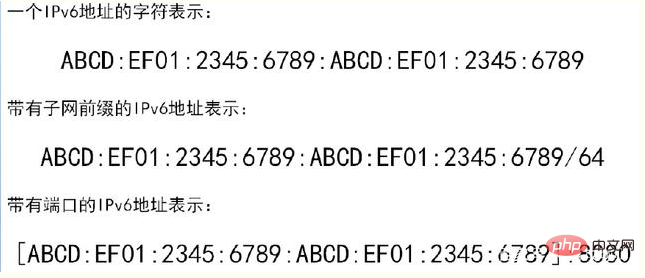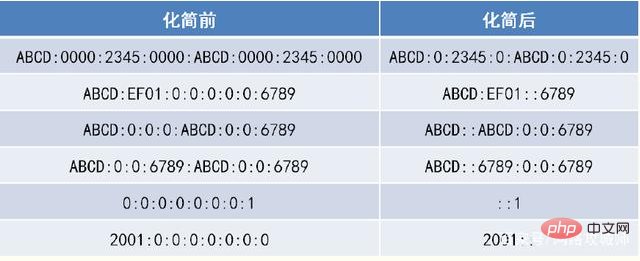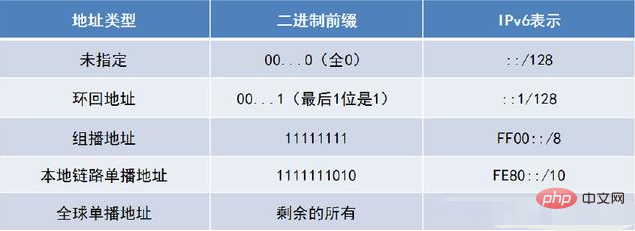How to classify ipv6 addresses
IPv6 address classification method: 1. Unicast address, a unicast address corresponds to an interface, and data packets sent to the unicast address will be received by the corresponding interface; 2. Multicast address, a multicast address The address corresponds to a group of interfaces, and data packets sent to the multicast address will be received by all interfaces in this group.

How to classify ipv6 addresses:
For IPv4 addresses, we know that they are divided into Class A, Class B, Class C, multicast address and reserved address are several major categories. Class ABC addresses also have different functions such as broadcast address, private address and other types. So how are IPv6 addresses classified? This article will give you a preliminary understanding.
Let’s first talk about why it is called a preliminary understanding, because so far, the classification standard for IPv6 addresses is still being formulated. The most recent draft standard was formulated in 2006 (specifically You can check RFC4291), so this article can only lead you to try it out and have a general understanding of IPv6 address classification and structure. Just like the IPv6 standard took 20 years to change from a draft to a formal standard, the determination of IPv6 address classification standards is also a long process. Of course, with the rapid popularity of IPv6, the determination of this standard will definitely accelerate.
1. IPv6 address representation method
The IPv6 address has a total of 128 digits. In order to facilitate manual reading and input, like the IPv4 address, the IPv6 address can also be represented by a string. character representation. The IPv6 address is expressed in hexadecimal. The IPv6 address is divided into 8 blocks, each block is 16 bits, and the blocks are separated by ":". As shown below:

#At the same time, when multiple address blocks are 0, you can use the "::" sign to simplify.
Simplification principle:
All 0 blocks "0000" can be simplified to "0"
- ## Multiple All 0 blocks can be simplified to "::"
- Only one "::" can appear in an IPv6 address. When multiple all 0 blocks appear, "::" must Simplify the longest paragraph. If there is no longest paragraph, go to the nearest one (left)
- "::" can appear at the beginning or end of the address

2. IPv6 address types
IPv6 addresses are generally divided into three categories: unicast addresses, Anycast address, multicast address.- Unicast address: A unicast address corresponds to an interface, and data packets sent to the unicast address will be received by the corresponding interface;
- Anycast address: An anycast address corresponds to a group of interfaces. Data packets sent to the anycast address will be received by one of the interfaces in the group. Which interface is received is determined by the specific routing protocol;
- Multicast address: A multicast address corresponds to a group of interfaces. Data packets sent to the multicast address will be received by all interfaces in this group;

The above is the detailed content of How to classify ipv6 addresses. For more information, please follow other related articles on the PHP Chinese website!

Hot AI Tools

Undresser.AI Undress
AI-powered app for creating realistic nude photos

AI Clothes Remover
Online AI tool for removing clothes from photos.

Undress AI Tool
Undress images for free

Clothoff.io
AI clothes remover

Video Face Swap
Swap faces in any video effortlessly with our completely free AI face swap tool!

Hot Article

Hot Tools

Notepad++7.3.1
Easy-to-use and free code editor

SublimeText3 Chinese version
Chinese version, very easy to use

Zend Studio 13.0.1
Powerful PHP integrated development environment

Dreamweaver CS6
Visual web development tools

SublimeText3 Mac version
God-level code editing software (SublimeText3)

Hot Topics
 1665
1665
 14
14
 1424
1424
 52
52
 1322
1322
 25
25
 1270
1270
 29
29
 1249
1249
 24
24


